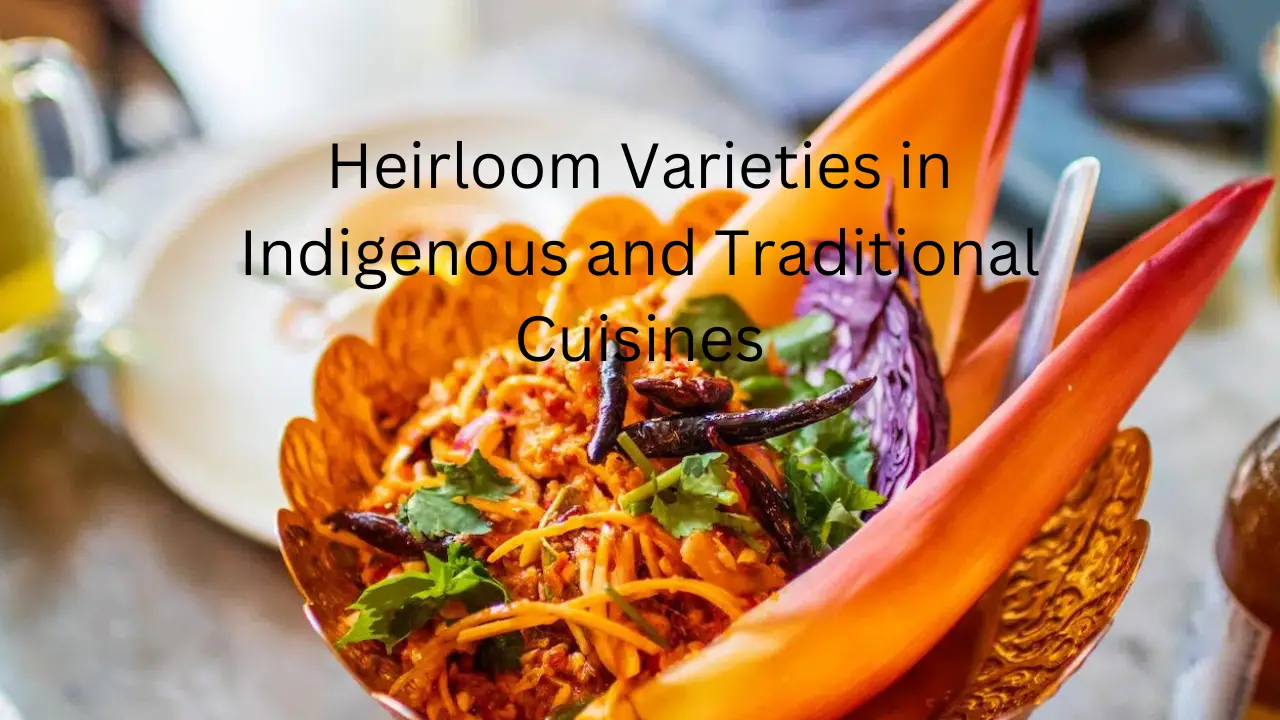
Bedsure Fleece Bed Blankets Queen Size Grey - Soft Lightweight Plush Fuzzy Cozy Luxury Blanket Microfiber, 90x90 inches
35% OffHeirloom Varieties in Indigenous and Traditional Cuisines
Introduction
In a world that’s increasingly dominated by mass-produced food, there’s a growing movement to rediscover and celebrate heirloom varieties in indigenous and traditional cuisines. These unique and time-honored ingredients not only offer a rich tapestry of flavors but also hold cultural and historical significance. In this article, we will explore the fascinating world of heirloom varieties, their role in traditional cuisines, and why they are making a comeback in the culinary scene.
The Significance of Heirloom Varieties
Preserving Biodiversity
Heirloom varieties are open-pollinated, non-hybridized plants that have been passed down through generations. They play a crucial role in preserving biodiversity by maintaining a wide range of genetic traits that can withstand different environmental conditions. This diversity is essential for ensuring food security in a changing world.
Cultural Heritage
Heirloom varieties often have deep-rooted connections to specific cultures and regions. They have been cultivated for centuries, carrying the stories, traditions, and flavors of those who tended to them. These varieties are a living testament to the culinary heritage of indigenous and traditional communities.
Rediscovering Heirloom Ingredients
Unique Flavor Profiles
One of the most captivating aspects of heirloom varieties is their distinct flavor profiles. Unlike their mass-produced counterparts, heirlooms offer an explosion of tastes, from sweet and tangy to earthy and nutty. For example, the Cherokee Purple tomato boasts a rich, smoky flavor that is a far cry from the blandness of commercial tomatoes.
Nutritional Value
Heirloom varieties often contain higher levels of nutrients compared to their hybridized counterparts. Their diverse genetics can result in increased vitamins, minerals, and antioxidants. This nutritional density makes them not only delicious but also healthful additions to our diets.
Heirlooms in Traditional Cuisines
The Role of Heirlooms in Recipes
Traditional cuisines around the world have long relied on heirloom varieties to create iconic dishes. For instance, in Mexican cuisine, the use of heirloom corn varieties like Oaxacan Green Dent and Bolita beans is fundamental to the preparation of dishes like tamales and pozole.
Culinary Revival
Many chefs and food enthusiasts are now embracing heirloom ingredients to revive and reinvent traditional recipes. This movement highlights the versatility of heirlooms, demonstrating that they can shine in both classic and innovative dishes.
The Growing Demand
Farm-to-Table Movement
The farm-to-table movement has played a significant role in the resurgence of heirloom varieties. As consumers become more conscious of where their food comes from, they seek out local and heirloom ingredients that offer superior taste and sustainability.
Market Accessibility
Heirloom varieties are becoming more accessible in farmers’ markets and specialty stores. This accessibility encourages home cooks and chefs alike to experiment with these unique ingredients.
Conclusion
Heirloom varieties in indigenous and traditional cuisines are not just about food; they represent a connection to our roots, a celebration of biodiversity, and a commitment to preserving cultural heritage. As we continue to rediscover these treasures, we not only enrich our palates but also contribute to a more sustainable and flavorful food future.
FAQs (Frequently Asked Questions)
1. Where can I find heirloom ingredients?
You can typically find heirloom ingredients at farmers’ markets, specialty stores, and some online retailers specializing in organic and heritage produce.
2. Are heirloom varieties more expensive than regular produce?
While heirloom varieties may be slightly more expensive due to their limited availability and unique characteristics, many people find the taste and cultural significance well worth the investment.
3. Can I grow heirloom vegetables in my own garden?
Yes, many heirloom varieties are well-suited for home gardening. They can thrive in a variety of climates and provide an opportunity to connect with your culinary heritage.
4. Are heirloom ingredients better for the environment?
Heirloom varieties are often grown using traditional and sustainable farming methods, making them a more environmentally friendly choice compared to monoculture farming practices.
5. What is the best way to incorporate heirloom ingredients into my cooking?
Experimentation is key! Start by substituting heirloom varieties into your favorite recipes or seek out traditional dishes that specifically call for these unique ingredients. You’ll be amazed at the depth of flavor they bring to your meals.











